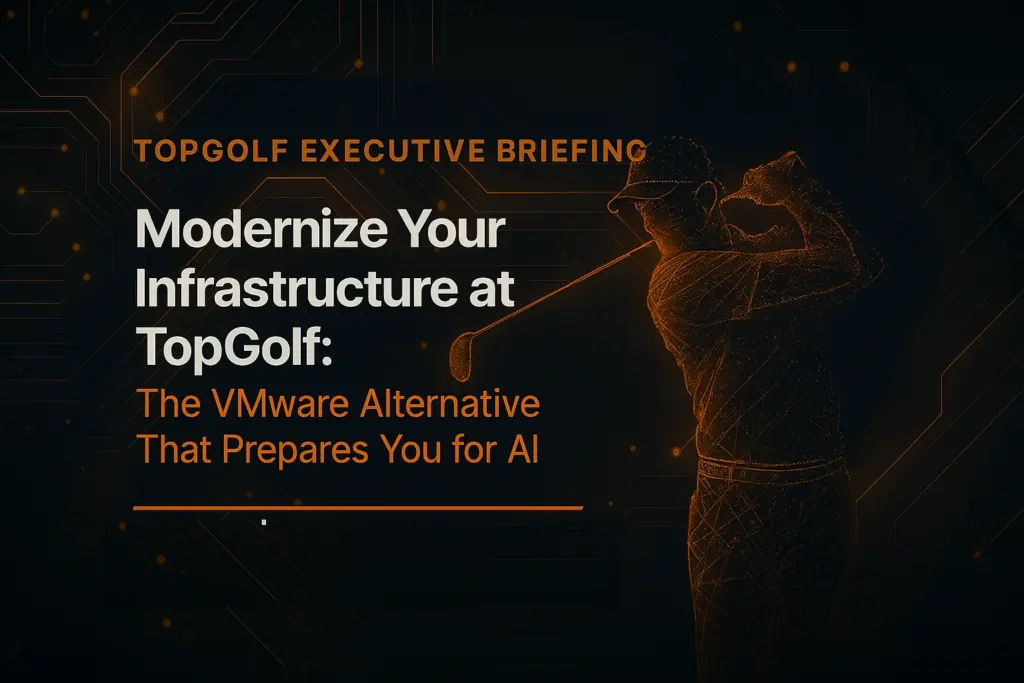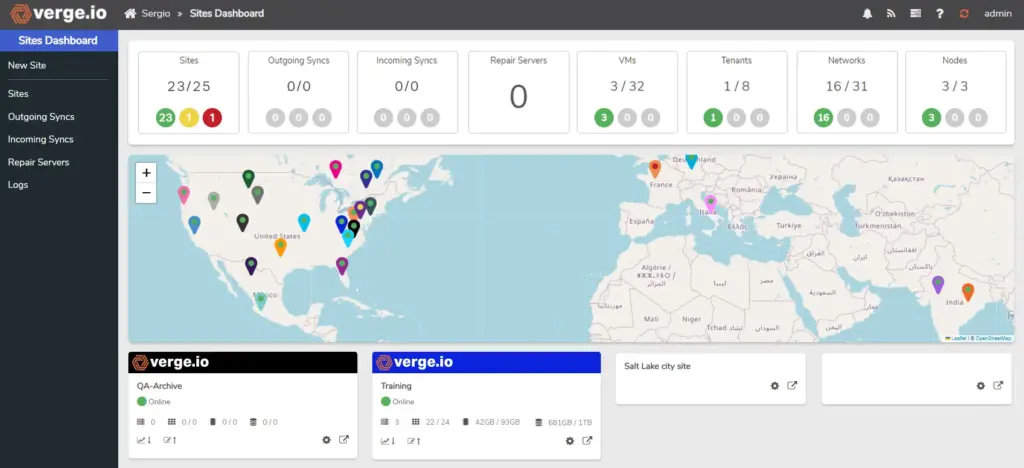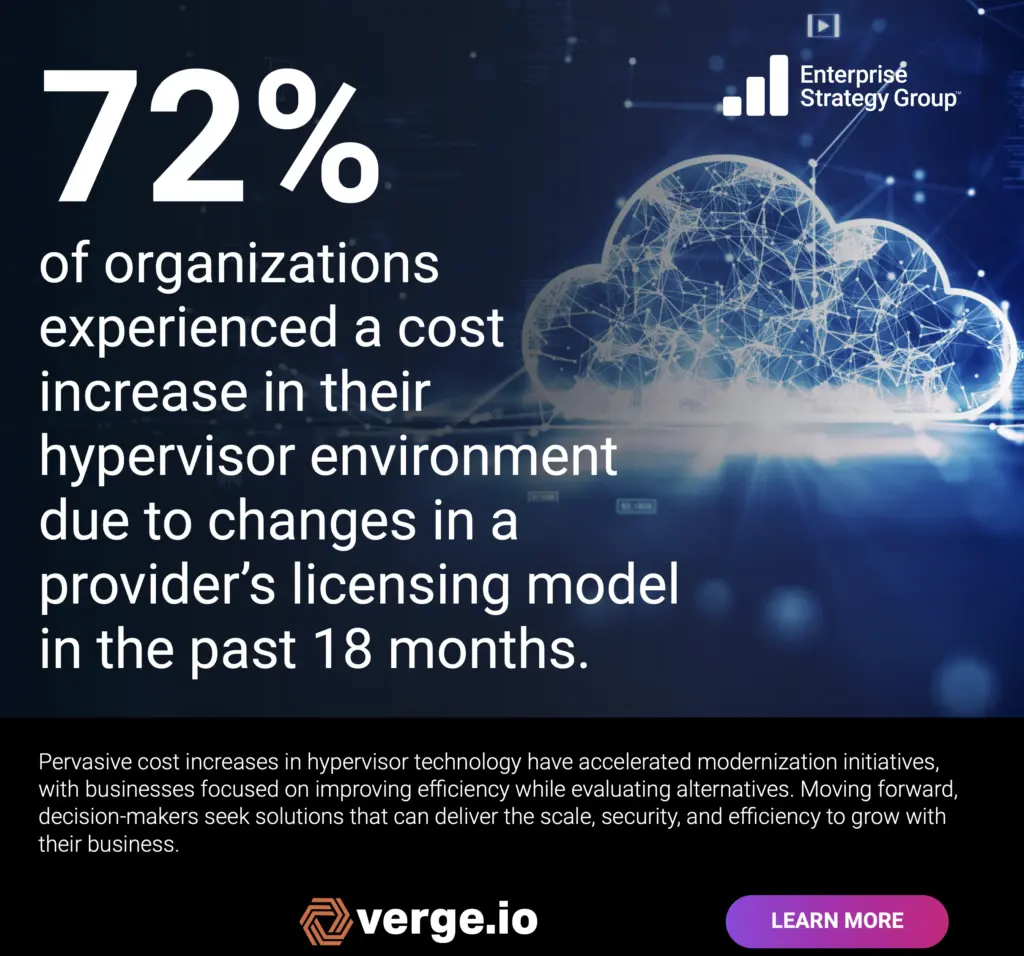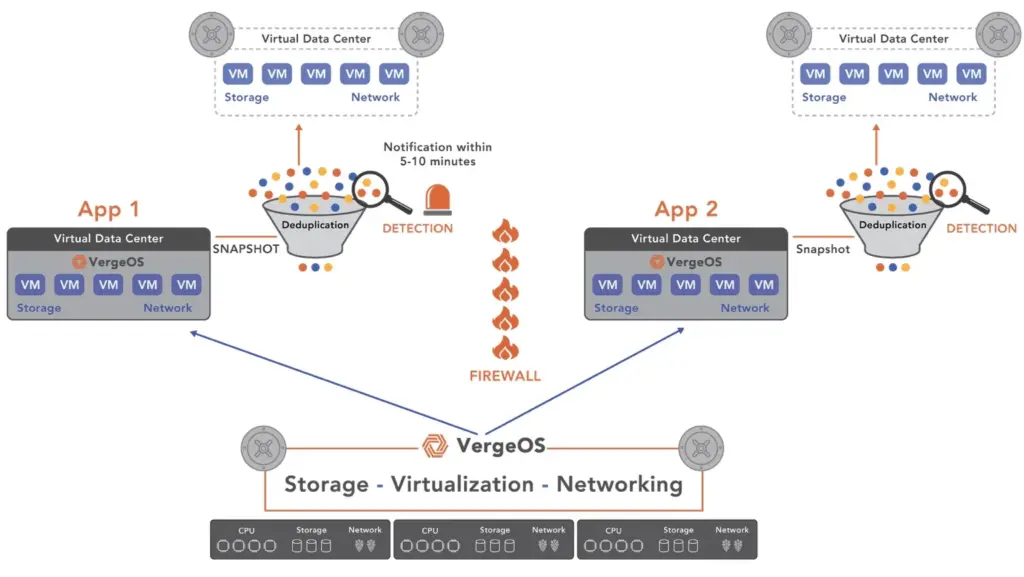
The Broadcom acquisition of VMware is prompting IT leaders to reassess remote deployments, making it an ideal time to upgrade Edge data protection. The Edge encompasses Remote Office Branch Offices (ROBO), Venues in the entertainment industry, and true Edge sites for data collection.
Organizations with any or all of these location types adopted VMware for server consolidation, not resilience. A few small servers could run all workloads and remain online without the cloud or core, providing local processing and independence in the event of a WAN failure.
Now the economics and packaging of VMware have changed, but exiting VMware should be more than a hypervisor swap. It’s a chance to upgrade edge VMware protection and DR.
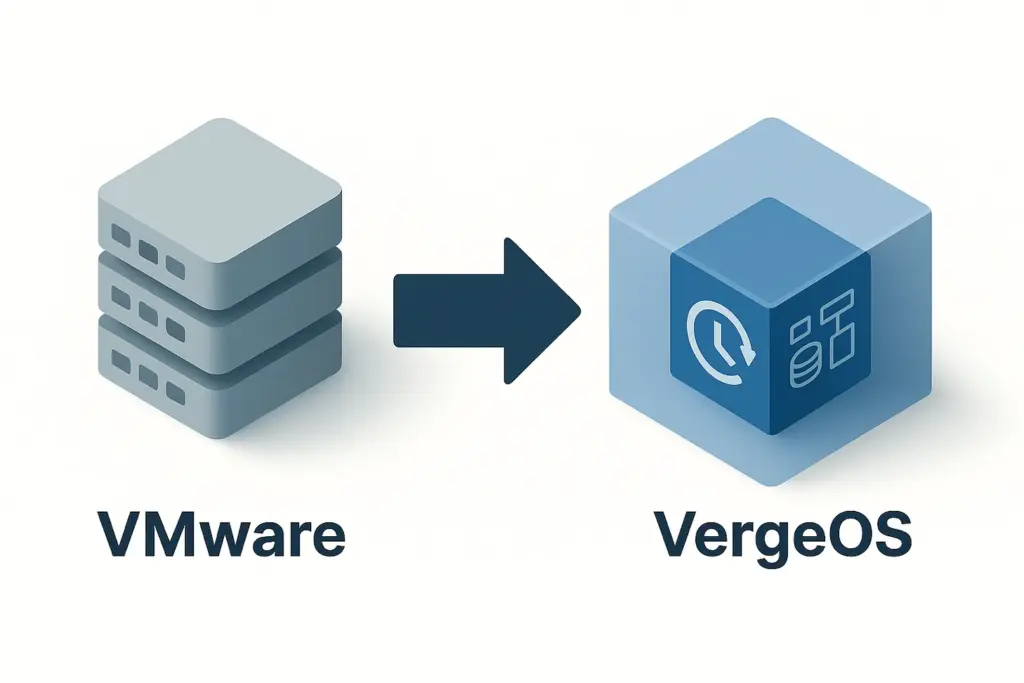
Doing so can reduce licensing and hardware costs, eliminate redundant backup appliances, and enhance recovery speed after outages or accidental deletions. It also prepares IT for new edge use cases, such as AI inference, where local processing demands stronger resilience and faster recovery. If you are an IT professional with multiple sites, download our comprehensive guide to a VMware exit for multi-site organizations.
The Old Data Protection Model
Backup dependency
VMware offered rudimentary edge protection. Customers relied on third-party backup appliances or agents, each with extra licensing, hardware, and management overhead. This added cost and complexity for ROBO and venue sites which typically have little or no IT staff. Backup servers and storage arrays also consumed precious rack space that edge and ROBO locations rarely had. This is why it is time to upgrade Edge data protection.
Replication challenges
Replication was never native. Organizations turned to SRM or external tools, which were complex, expensive, and impractical for small sites. Many locations simply went unprotected.
Snapshot limitations
VMware snapshots were tied to VMFS or vSAN, resulting in degraded performance and increased capacity consumption. Many customers avoided them or used them as a temporary staging copy for backup before deleting. VMware’s own documentation warns that snapshots should not be considered a form of protection.
Recovery gaps
Recovering workloads was a complex process that required the use of runbooks. These were manually created, brittle, and often untested until a crisis. Testing DR was especially hard for venues and edge sites with limited or no maintenance windows. The first “test” was usually a real outage, with predictable failures.
Scale mismatch
VMware’s protection stack was designed for four to sixteen node clusters, not two- or three-node sites. vSAN requires at least three nodes or two plus a witness, adding cost and complexity. VxRail requires four or five nodes—well beyond the needs and budgets of edge or ROBO locations.
Why VMware Data Protection Falls Short
VMware’s protection model was never designed for distributed sites. It layered point products on top of the hypervisor and left IT to tie them together, resulting in tool sprawl, increased overhead, and higher costs—another reason why it’s time to upgrade Edge data protection.
Tool sprawl
Even with central management, IT had to juggle separate logins, passwords, and consoles across dozens or hundreds of sites. Context switching became exponential overhead.
Fragile protection
RPOs were measured in hours or days, with even longer RTOs. Every restore relied on backup servers and brittle runbooks. Secondary backup steps added delays and new failure points.
No cyber recovery
VMware snapshots—whether standard or vSAN—were not immutable, and replicas usually lived in the same location. A ransomware attack or corruption could wipe out both production and “protected” copies.
Inconsistent coverage
Some sites were protected, others were not. It could take weeks to notice, and even longer to diagnose. Without a shared telemetry stream, IT had to log in and out of multiple systems, making correlation across sites nearly impossible.
Testing and validation gap
DR testing was rare. Venues and edge sites have little or no downtime, so runbooks went untested. The first recovery attempt usually came during an outage, with poor results.
The Modern Model: Integrated Data Protection
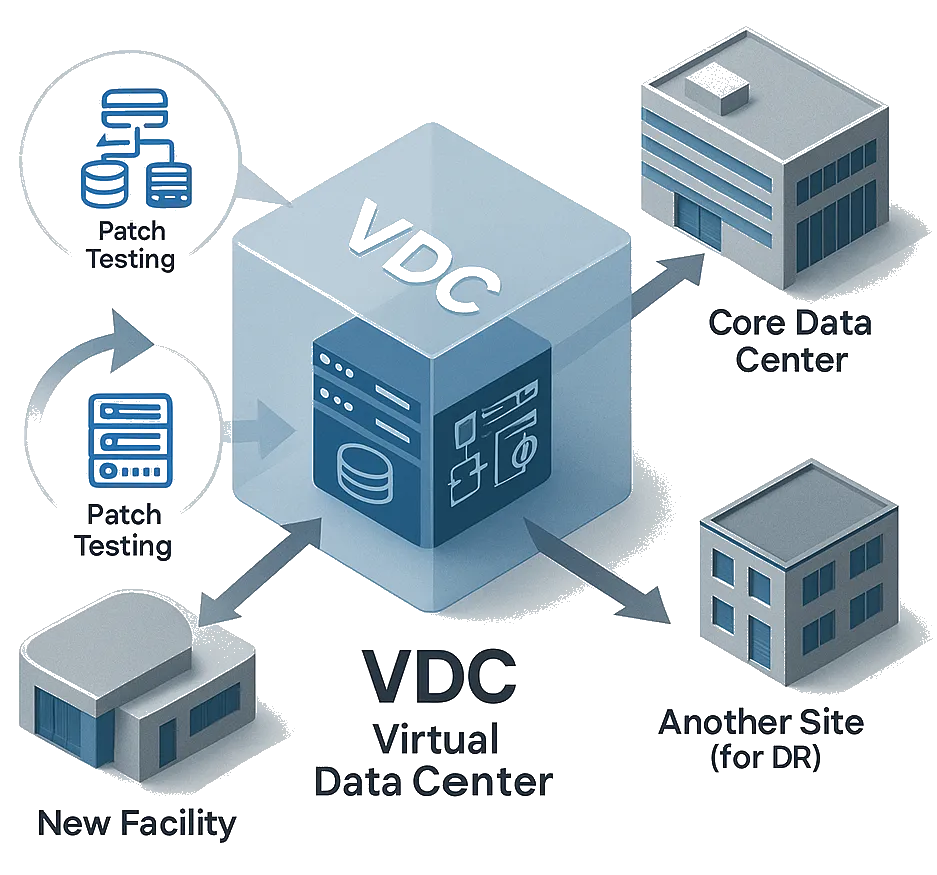
VergeOS eliminates the sprawl of point products by integrating protection directly into the same stack that delivers virtualization and storage. This changes protection from an add-on to a native capability and is clearly a way to upgrade Edge data protection.
Site virtualization
VMware virtualized servers. VergeOS virtualizes entire sites. Its Virtual Data Center (VDC) technology captures workloads, storage, and networking as one logical entity. A VDC can be migrated to the core, another site, or a new facility, enabling protection and mobility beyond VM portability. It also allows patch testing by cloning an entire site into a safe environment for updates and validation before production.
Built-in snapshots
Snapshots in VergeOS are instant, immutable, and policy-driven. They can be taken at the site, VDC, or VM level, with recovery just as granular. They impose no performance hit and avoid capacity sprawl, so they can be kept long enough to provide real protection.
Native replication
Replication is built in. It is lightweight, policy-based, and supports site-to-site, hub-and-spoke, or paired topologies—removing the need for SRM or third-party tools. Policies can be defined once and applied everywhere. Combined with VDC virtualization, recovery works the first time, bringing an entire site back online in a few clicks.
Policy-driven tiers
Different site types can be assigned different protection profiles. A ROBO might use nightly replication, a venue may require aggressive POS and video protection, and edge sites can run short-interval snapshots. Policies are defined centrally and enforced locally.
Cyber recovery isolation
VergeOS snapshots are read-only, and replicas can live in independent locations, giving IT true isolation. Clean copies can be launched for testing without impacting production, making cyber recovery a routine process.
Centralized fleet management
Policies, snapshots, replication, and compliance are visible in a single console. Upgrades can be staged regionally and rolled out live, even across hundreds of sites.
AI-aware protection
With VergeIQ GPU workloads at the edge can be protected just like VMs. VergeOS snapshots and replication cover models, embeddings, and inference data, allowing rollbacks, recovery, or moves alongside the rest of the site.
VMware vs. VergeOS Data Protection
| Capability | VMware / Legacy Approach | VergeOS Integrated Model |
|---|---|---|
| Snapshots | Tied to vSAN/VMFS, performance hit | Instant, immutable, no impact |
| Replication | SRM or 3rd party, costly/complex | Native, lightweight, policy-driven |
| Backup | Requires separate appliances | Built-in to core platform |
| Recovery | Manual runbooks, brittle | Consistent object recovery, few clicks |
| Cyber Recovery | Not immutable, no isolation | Immutable snapshots, isolated replicas |
| Fleet Management | Many consoles, siloed telemetry | One pane across all sites |
Edge Data Protection’s Impact on the Core
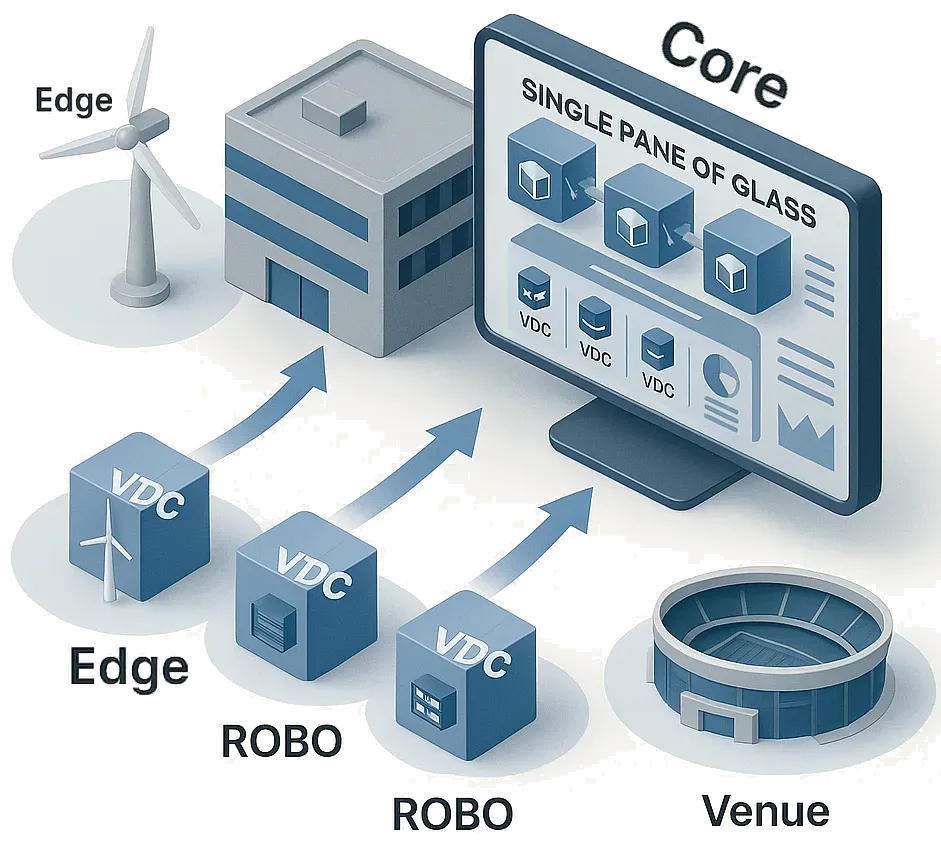
Running the same software stack at the edge and in the core delivers consistency VMware never offered. VergeOS runs everywhere, so IT doesn’t need different tools for small sites and large clusters. Operations are predictable, upgrades are faster, and risk is reduced.
Replication from the edge to the core is straightforward. Sites arrive as complete Virtual Data Centers, making recovery as simple as starting a consistent object instead of piecing workloads together.
The core can host tenants by geography or business unit, define protection policies once, and push them everywhere. Fleet-level upgrades and policies can be staged regionally and applied without downtime.
Observability is unified. VergeOS provides a single telemetry stream, eliminating the need to chase logs across multiple products. IT sees protection status and compliance in one console.
The core becomes the foundation for AI. Models can be trained centrally, distributed to sites, and protected with the same snapshots and replication used for VMs.
With VergeOS, the edge and core operate as one system, running the same software with the same protection capabilities.
Conclusion
The Broadcom acquisition of VMware forces a choice. IT can either repeat the old model with another hypervisor and bolt-on tools, or take the opportunity to build something better.
Exiting VMware should not be a lateral move. It should be an upgrade. By integrating snapshots, replication, site virtualization, and fleet visibility, VergeOS replaces fragile point products with one platform. Protection becomes routine, recovery becomes reliable, and AI readiness is built in.
The VMware exit is more than just a cost issue—it is the chance to reset edge data protection and lay the foundation for the next decade.
